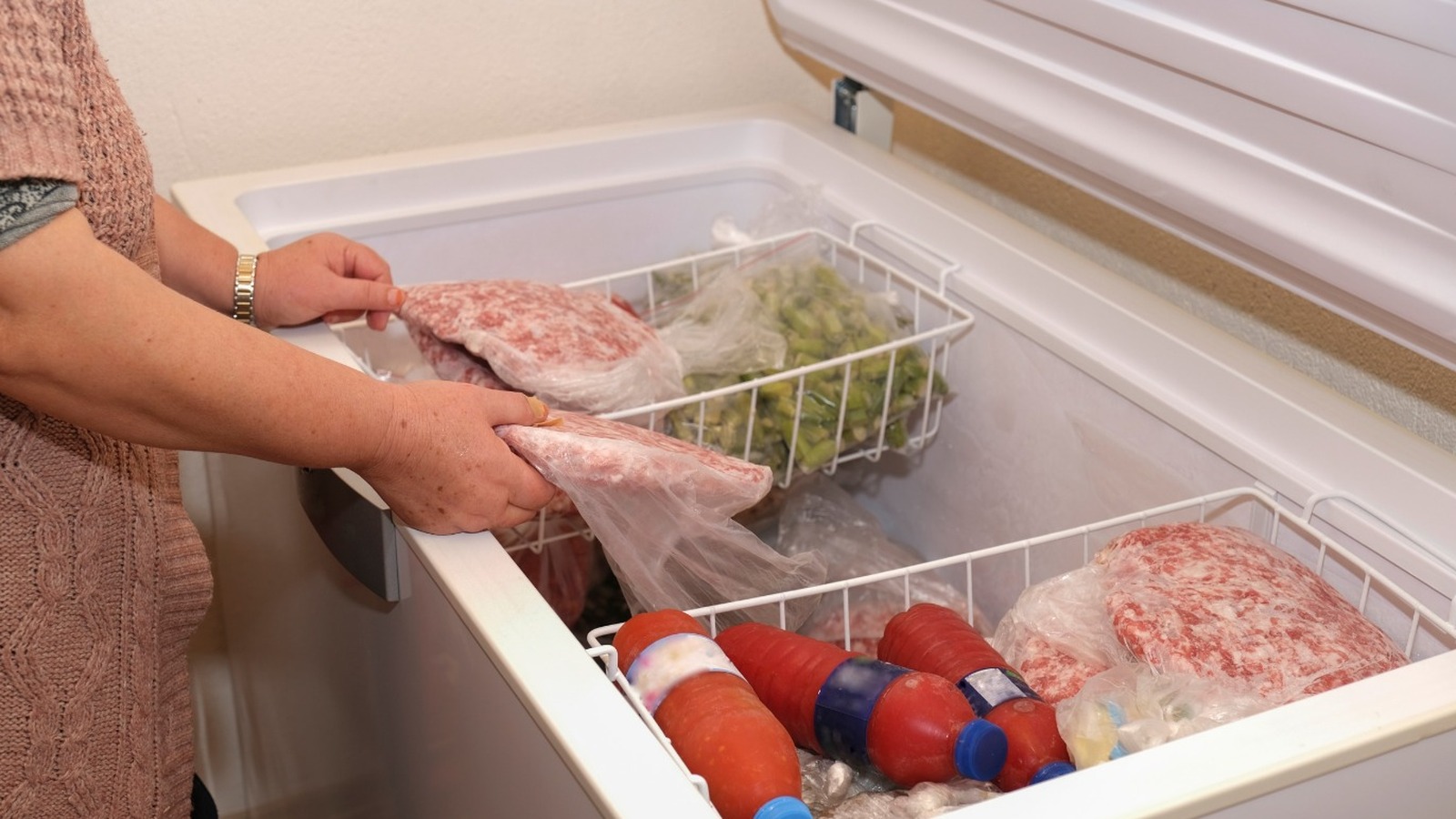
When Costco is having a special on excellent pieces of meat or you have a big family that eats more food than a normal refrigerator can hold, chest freezers come in useful. No matter why you have a chest freezer, everyone has the same problem: how to maintain organization. A chest freezer can easily get cluttered as you purchase more food because it is essentially a deep chest. This makes it challenging to access food that is kept in the bottom and to remember what you already have on hand. However, these problems can be resolved with astute planning.
Here are some tips for organizing your chest freezer so that it doesn't appear to be an unruly food tangle. You'll find it easier to keep track of your inventory if you follow these easy steps.
Sort things into categories.
You must classify your food, just as you would your closet. Remove everything from the chest freezer and arrange it in piles, including frozen entrees, breads, soups, meats, sauces, and more. If you have a lot of a certain category, you can make subcategories like "fish," "beef," and "chicken." This can help you keep track of your possessions and determine the type of storage bins or racks you require based on the quantity in each.
Keep freezer bins on hand
Invest in freezer bins that are portable so you may avoid having loose bags strewn all over your freezer. After taking measurements of your freezer, search online for bins that fit the chest's depth. Whether you choose wire farmhouse bins, solid plastic bins, or old moving boxes, you can't go wrong. You can also look around your home to check if there are any containers that aren't being used right now. Check out the assortment of plastic bins at your neighborhood dollar store for a less expensive option.
Make sure the bins you select match the size of your categories. If you have a lot of baked products or frozen bread on hand,Select a container large enough to hold everything in one location. However, a little bin will enough if you have a small amount of pre-chopped vegetables.
Decanting the food into plastic bags is one option.
If you have tubs of frozen soups, big quantities of frozen vegetables, or hefty meats, think about moving them from bulkier cartons to freezer bags that can be packed neatly. The objective is to make the bags as flat as possible to facilitate arrangement, which may require breaking up a single item into a number of smaller bags. If you do this, be sure to clearly mark the expiration date and serving location on each bag.To ensure you use the items first, place those with the earliest expiration dates at the top of the bin.
Choose what you use most frequently.
Choose the items in your freezer that you use the most, such as pre-cut veggies for cooking or soups for easy lunches, and set those categories aside. To avoid having to move bulky boxes to reach anything you use every day, make sure those containers are at the very top of the chest. Rather, you want the things you use frequently at the top of the chest and the things you use infrequently or have stocked for a rainy day in the bottom.
Put your freezer bins in a stack.
To make moving your bins easier, stack them in different directions.For instance, place your bulkiest and least used stuff on the bottom of your chest. You can store anywhere from two to five bins in the freezer, depending on its size. The following bins should be layered vertically if those were ordered horizontally. Continue until you get to the top layer, which should contain the things you use the most. Without having to rummage through bulky bags and boxes, you may easily remove those bins to reach the layer you need when you need to obtain something farther down inside the chest.
To create greater room, think about vacuum sealing.
If you don't have enough space for a larger freezer but still have a lot of extra food, vacuum-seal it to make your supply easier to handle. Any extraneous space will be compressed as a result.enabling you to arrange more bags than you could typically fit in a bin. You can use a vacuum sealer machine to do this for you, or you can do it by hand using a basin of water and a zip-top freezer bag. Place your food in the bag flat, squeeze out as much air as you can, then zip the bag shut nearly all the way. Smooth out any large air bubbles that may form as you carefully lower the bag into the water while holding it by the open corner. Zip it shut after continuing to lower it until you reach the corner. You ought should have an airtight seal after this.
A paper inventory should be kept on the chest
No matter how meticulously you arrange, it can be challenging to remember what's in your freezer at times. Keep a paper inventory attached to the outside of the appliance to make sure you don't use the final soup container without realizing it or forget that cut of meat at the very bottom of the chest. Put the food item, the size of the box or container, and the number of packets you have in each line. You can use this to remind yourself that you have that one unusual ingredient you forgot entirely or to see if you're running low on something. To make it easier to cross items off your inventory as you collect them, think about getting a magnetic pen that you can wear on your chest.

 Admin
Admin
Leave A Reply
Your email address will not be published. Required fields are marked *